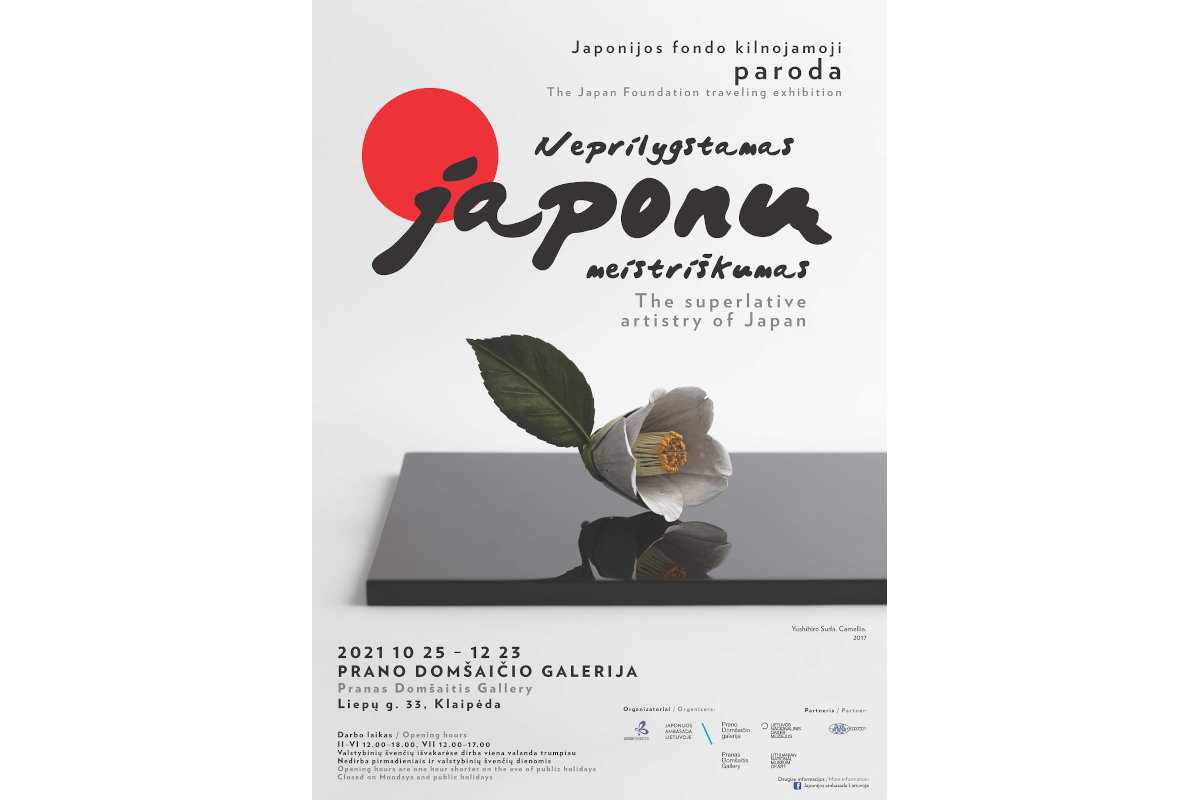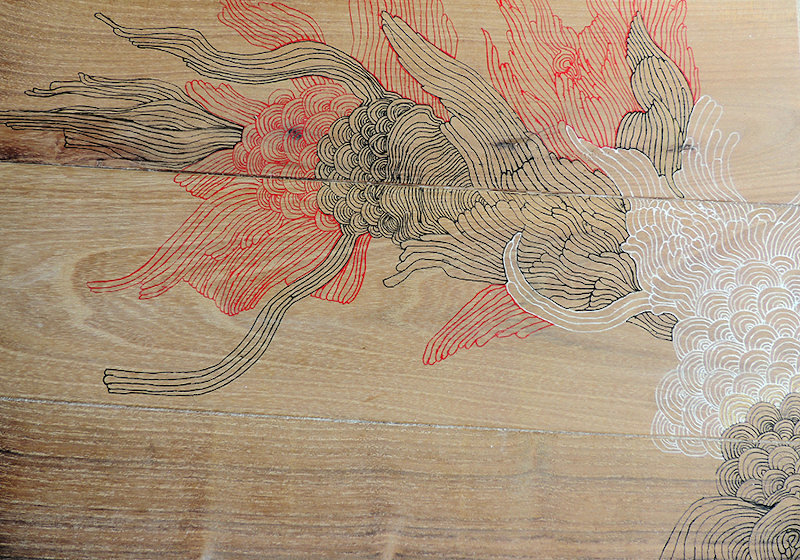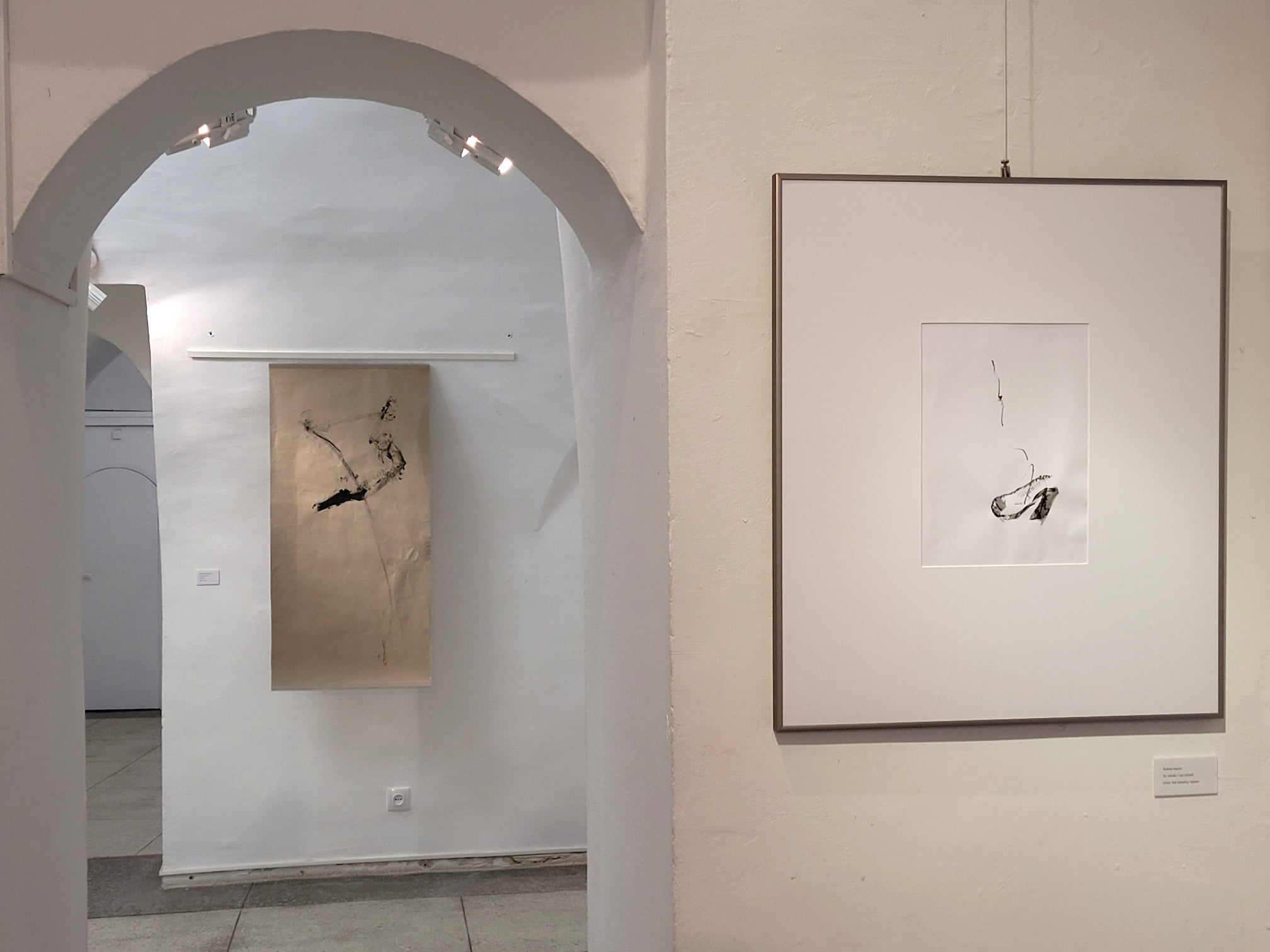The Japanese art in Lithuania

Traditions of Japanese art reach Lithuania in various ways. Pieces of art can already be noted at the end of the 19th century in private collections of Lithuanian noblemen. However, they were attainable only by a fortunate few. At the beginning of the 20th century, the first public exhibition of Japanese artworks was arranged. Unfortunately, many artistic assets were destroyed or lost during the wars and occupations in the 20th century. The remaining pieces of art are carefully protected and people can see them publicly very seldom.
Thanks to exhibitions, creative workshops, and the Japanese artists residing in Lithuania, people have more opportunities to get acquainted with traditions of the Japanese art after the restoration of independence in 1990, ranging from the famous woodblock prints, that attracted people‘s attention to Japan for a long time, to ceramics, sculpture, ink painting, flower art ikebana, Japanese swords, and tea ceremony. Many Lithuanian artists inspired by the principles of east esthetics, introduced the Japanese traditions to their art.
(sumi-e of Dalia Dokšaitė from the cycle "Japonija"; D. Dokšaitė personal archive)

Collections and exhibitions of Japanese art in Lithuania
The first Japanese paintings reached Lithuania in the second half of the 19th century after Japan opened to trade with other countries. Various Lithuanian collectors collected them until the Second World War. As a result, smaller or bigger collections were assembled in Plungė, Šiauliai, Kaunas, Kretinga, and Vilnius. Perhaps the first opportunity to get acquainted with Japanese art publicly in Lithuania occurred in April 1914 – an art exhibition was brought to Vilnius. After the restoration of independence in 1990, events representing Japanese art in Lithuania are organized frequently.

Collections of Japanese art in Lithuania
Probably the biggest collection of Japanese art today is in the Lithuanian National Museum of Art. The beginning of the formation of this collection was during the years of war. Other big collections are stored at Vilnius University, Vilnius Academy of Arts. Woodblock prints were brought to the Academy from Kaunas Art School and before that they were bought in Berlin. The Japanese engravings, paintings, vases, and works of textile are kept in Mykolas Žilinskas Art Galery in Kaunas.
(Villa of Chaim Frenkel. Objects of the Eastern Art Gallery)
The greater part of the woodblock prints collection assembled by Ona Bagnickaitė in the first half of the 20th century is in Šiauliai “Aušra” Museum, and several exhibits are kept in the Memorial Museum of B. Sruoga (Kaunas). They were saved by the museologist Vladas Zdzickauskas during the Second World War. Franciscans in Kretinga received 13 woodblock prints from the father priest and collector Leonardas Andriekus, who lived in the USA and was an expert on the art of the East.
Mobile collections of the Japan Foundation
Mobile collections of Japan Foundation have been brought to Lithuania since 1996 by the Information Center of Japan and later the Embassy of Japan in Vilnius. They are exhibited in spaces of different Lithuanian cities. Thanks to more than 20 exhibitions, Lithuanian people could learn about the different aspects of Japanese art, for instance, kites and spinning tops, posters, photography, fine crafts, architecture, and many others.
(posters of exhibitions; Japan's Embassy in Lithuania archive)
Artists following the Japanese theme
Lithuania could get acquainted with various works of Japanese art via exhibitions and other events. Also, quite a few Lithuanian artists adopted the principles of esthetics and art philosophy of this country which influenced their works. Soon before the restoration of the independence of Lithuanian in 1990, a big wave of interest and admiration in Japan arouse. Artists of that time attempted to get acquainted with the Japanese culture and adapted its characteristics. Especially Lithuanians were interested in Japanese graphics and ink painting, which became a separate branch of art. Here several Lithuanian painters, who are following the Japanese theme, are represented.

(exhibition of Ieva Liaugaudaitė "Smilgos aplankė peizažą"; "Literatūra ir menas" archive)
Dalia Dokšaitė became interested in the Japanese culture 30 years ago while she was a student at Vilnius Academy of Arts and for the last 20 years, she devoted herself to this country. Since 1995 she has been using sumi-e (ink painting) technique and calligraphy sumi-e (soibukuga). The painter participates in exhibitions in Japan, China, Taiwan, and many European countries and wins the highest awards. In Lithuania and abroad she organized more than 30 personal exhibitions of sumi-e and calligraphy. Also, she prepared more than one international project. What is more, D. Dokšaitė participates in academic conferences, runs seminars on sumi-e and calligraphy, holds lectures, participates actively in radio and television shows, writes articles. In 1998 she opened her art studio “The Road of Ink” (lit. “Tušo kelias”) and in 2013 – Japanese Culture Home in Vilnius.
Her students follow the tradition of ink painting of Dalia Dokšaitė and eagerly paint in this technique.
(cycle of sumi-e paintings "Lietuva"; personal archive of D. Dokšaitė)

The former Lithuanian Minister of Culture is closely related to Japan. 1995-1997 he studied at the Tokyo University of Arts (Tokyo Geijutsu Daigaku) in Japan, and in 2001 he defended his dissertation in English at Vytautas Magnus University entitled "The Emergence of the New Paradigm of Order in Nishida and Merleau-Ponty Philosophy." For many years he taught painting based on Japanese calligraphy and ink painting techniques at the Vilnius Academy of Arts.
Arūnas Gelūnas has held three exhibitions of his works in Japan in 1996-1997, i.e. Nagoya, Tokyo (Shimizu Gallery), and Yokohama (Bellini Gallery). Japanese ink painting had a great influence on his work. He has repeatedly exhibited his Japanese aesthetic works in Lithuania and Europe. In 2020 the Japanese government awarded him for his merits with the Order of the Rising Sun.
Lina Kusaite is an illustrator, eco-art educator and coach, living in Belgium. Her work has appeared in a diverse range of international publications, computer games and exhibitions. Lina’s main source of creative activities is nature and it’s ecosystems. Once Lina moved to Belgium and broadened her cultural horizons, she stared to know more about Asian culture through movies, animation and books. In all her creative search and expressions Lina looks for strange, weird and some time even disturbing elements. Her inspiration comes from people like writer Kobo Abe, animators Hayao Miyazaki, Mamoru Oshii, Satoshi Kon, and Masanobu Fukuoka, a Japanese farmer and philosopher. His work changed Lina’s perception about human - nature relation and connection. Inspired by his work and philosophy in natural farming and plant guild method, Lina dived into creating different methodologies, workshops and artworks in order to inform people about the social life of plants and undeniable need for humans to connect with wilderness.
(personal archive of Lina Kusaitė)

(bernardinai.lt archive)
This artist is creating kimonos for dolls while following the ancient technologies and using authentic fabrics. Since 2012 she created a kimono for ball-jointed dolls, which are miniature replicas of people. The artist sought to recreate Edo-era clothing and fashion by sewing a kimono from authentic vintage materials. These are natural silks, most of which are hand-decorated or embroidered. The artist's work has gained worldwide recognition.
This artist and ceramicist creates sculptural works of high-burning chamotte ceramics, which are glazed with original wood ash glazes. Her work is characterized by naturalness, spontaneous expression, improvisation, and depth of thought, responding to the aesthetic principles and philosophy of Eastern ceramics. The author also paints in ink (Zenga in stylistics) and creates haiku poetry.
(personal archive of Rima Leipuvienė)

After graduating from the Vilnius Academy of Arts with a master's degree in fresco-mosaic, the artist lives and works in Vilnius. Since 2010 participated in more than 20 exhibitions in Lithuania, Italy, and the USA. Researching various aspects of the interaction of Western post-war abstract painting with the principles of East Asian calligraphy, I. Liaugaudaitė focuses on the unique, spontaneous direction of Zen calligraphy and painting in Japan, the essence of which is the poetic vital energy of the creator, harmonious compositional structure.
(Ieva Liaugaudaitė next to her painting "Vėjas švelniai kviečia šokiui" in exhibition "Smilgos aplankė peizažą", 2022; personal archive of I. Liaugaudaitė)
The concrete jewelry collection of this artist “Metabolism | between utopia and reality” was inspired by Japanese metabolism architecture. The iconic buildings of Tokyo’s metabolism, the Nakagin Capsule Tower, and the Shizuoka Center are transformed into symbols in Japanese jewelry that tell the history of Japanese architecture.

(jewelry inspired by Japanese architecture; "Statyba ir architektūra" archive)
Since 1998 she organized several personal exhibitions of graphic works, prints, drawings, sketches, and ink mascara in Vilnius, Kaunas, Zarasai. 2009-2014 participated in the exhibitions of Dalia Dokšaitė's calligraphy and ink painting studio “The Road of Ink” (Lit. “Tušo kelias”). She loved sumi-e painting with Japanese dry ink on thin calligraphic paper. According to the author, this technique is both an exploration and an adventure as well an attempt to understand a different artistic language professionally. It is capricious but delicate, sensitive and generous, requiring concentration and patience. Looking at it is like an easy task and a clear task, but the first sensations are deceptive: the brush ignores the hand while the paper absorbs the ink in unexpected way.

Other forms of Japanese art in Lithuania
Contemporary art

(World Peace Art Exhibition, 2020; Lithuanian National Culture Center archive)
The Japanese are well known for their particularly innovative art and modern technology. One of the first exhibitions of contemporary Japanese art was held in 1996 in Vilnius. Toshihiro Kuno presented his installations, which he created while traveling the world, always using the same materials (salt, rice, earth, wood, metal) and adapting to the local environment each time. In 1997, an exhibition of Noriyuki Tanaka was also held. Hiroshi Egami, Taeko Mori, Mikio Kawasaki, and many other artists also had the opportunity to present their works in Lithuania.
One of the Lithuanians helping Japanese artists to come to Lithuania is Saulius Valius, who has been actively maintaining creative relations with this country for more than 20 years.
Sculpture

(LR Seimas / Džoja Gunda Barysaitė)
Those who are interested in sculpture can also see Japanese pieces of art in Lithuania. One of them is the monument "Moon Light" (Lit. “Mėnulio šviesa)”. In 2001, it was built near the Holocaust exposition of the Jewish Museum (Pamėnkalnio st.). This work, dedicated to the memory of Chiune Sugihara, was created by the Japanese sculptor Goichi Kitagawa and the Lithuanian Vladas Vildžiūnas.
Five works by Japanese artists are also exhibited in the European Park near Vilnius.
Natural environment and powerful energy of people fighting for the future made a great impression to me in Lithuania – this is what I wanted to represent in my work.
– Koji Nakase
Ceramics
Japanese pottery is another favorite form of Japanese art for Lithuanians. It is not only presented during exhibitions but also attempts to implement the tradition of producing these ceramics in Lithuania. The first ancient kiln anagama in Lithuania was built in 2004 in the village of Gojus (Trakai district) on the initiative of the artist-ceramicist Dormantė Steponavičienė.
Another ceramicist Beatričė Kelerienė, after a decade of studies in Japan, built the second Lithuanian anagama in the Karamazinai area near Vilnius in 2014. It is five meters long and takes 5 days to burn. The anagama can hold more than 150 pottery works. Other Lithuanian ceramics and sculptors also take part in its firing sessions.

(ceramic cup by Beatričė Kelerienė)
Tea ceremony

(tea ceremony performed by Raimonda Strazdienė in Druskininkai, 2020; Druskininkai "Atgimimas" school archive)
The tea ceremony can be seen as one of those forms of art that bring together a variety of Japanese arts. Ceramics, flavors, calligraphy, poetry, architecture, theater are involved here. One has to admire this art with all five senses. The tradition of drinking tea came from China and was refined and canonized in Japan five centuries ago. Since then it is passed down from generation to generation. In Japan, it's not just about drinking tea. It is making a pause for a moment, delving into the everyday life and nature around us. Since 1990, there are opportunities to enjoy tea ceremonies in Lithuania offered by visiting professional craftsmen. Several Lithuanians, such as Raimonda Strazdienė, have studied this art carefully in Japan and brought its traditions to Lithuania.
Textile
Many Lithuanian textile artists found inspiration in Japan. Miglė Lebednykaitė studied shibori painting techniques in Japan for a long time and applies them in her work. Designer Olesė Kekienė sees inspiration in the philosophy of Japanese wabi-sabi (imperfection and unadorned reality). Vilius Venckevičius follows the Japanese yohaku no bi philosophy.
Ikebana
The Japanese bouquet art ikebana, like the Japanese gardens, gained many followers in Lithuania. Many exhibitions of this fragile art and creative workshops were held already in the first decades of independence. Since 2009, the Embassy of Japan has been organizing ikebana exhibitions and training. Soon later, a group of art enthusiasts gathered together and established the VU Botanical Garden as one of the most important event centers for ikebana related activities. There are also several Lithuanians who have learned the secrets of this art in Japan, including Laimutė Vanagienė, Rasa Varvuolienė, and others.
(ikebana created in Lithuania; personal archive of Laura Popkytė-Fukumoto)
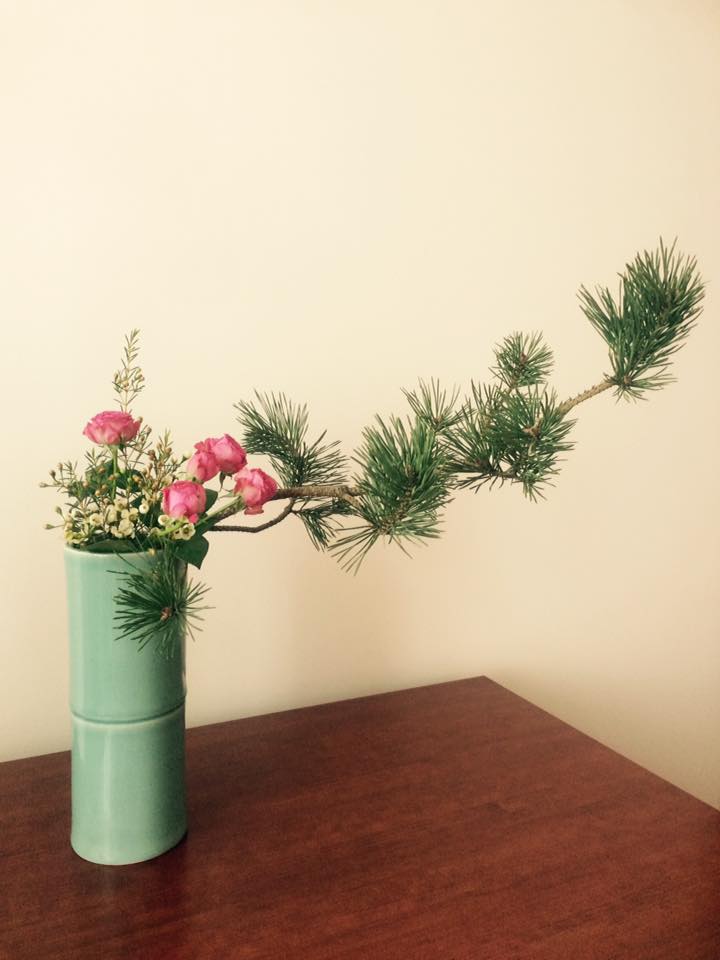
The Japanese swords in Lithuania
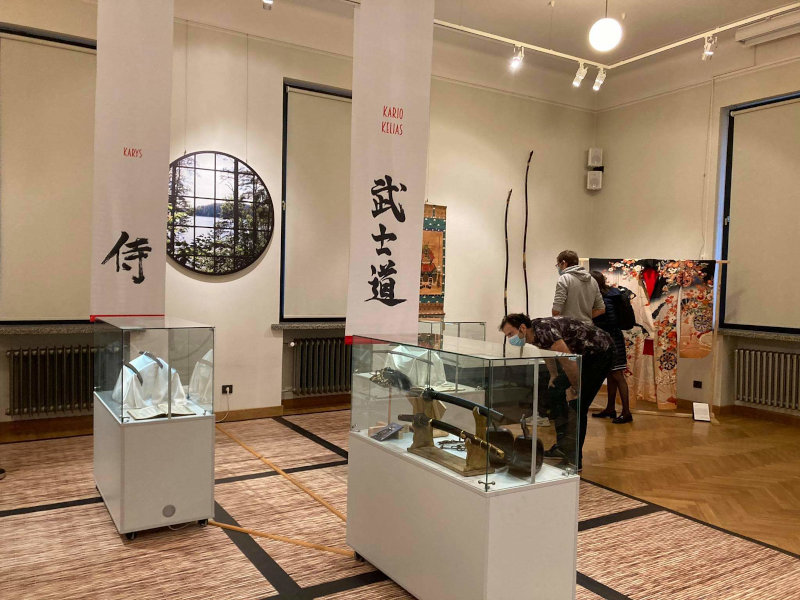
Lithuanians had the opportunity to get acquainted with yet another form of Japanese art – swords. Although in Lithuania they are more often associated with warfare, in Japan they are also valued as works of art, through which the craftsmanship of the producer and the natural beauty of the metal are revealed. During the history of independent Lithuania, two exhibitions dedicated to this art were organized. One of them was hosted in 2004 and organized by Japanese businessman Fuminori Noba, and the second – in 2020 by Paulius Rūkas, a well-known sword collector in Lithuania.
(exhibition of swords in Vytautas the Great War Museum, 2020; photo by A. Zykas)
Bibliography
- Adomaitienė, Rasa, Mikulionis, Skaistis. 2000. Senoji japonų graviūra. Lietuvos dailės muziejus.
- Baltrukonis, Jokūbas. 2020. Kauno ir Tokijo architektūrinės paralelės menininkę įkvėpė sukurti papuošalus iš betono. Statyba ir architektūra, 2020 vasario 26 d..
- Jonynaitė, Dalia. 2000. Onos Bagnickaitės japoniškų graviūrų kolekcijos tyrinėjimai. Lietuvos dailės muziejaus P. Gudyno muziejinių vertybių restauravimo centras.
- N.D. Azijos menininkų kūriniai Europos parke. Europos centro muziejus "Europos parkas".
- N.D. 2005. Seną Japonijos mokyklą atgaivino lietuviai menininkai. Delfi.
- N.D. 2017. Lėlės vienai dienai įkūnys Japonijos istorinę kultūrą ir buitį, Bernardinai.lt, 2017 balandžio 19 d.
- N.D. 2021. Anagamos krosnyje menininkų kūrinius nudažė ugnis ir pelenai. Panevėžio miesto Dailės galerija, 2021 kovo 25 d.
- Žukauskienė-Čepulionytė, Gabija. 2001. Dešimties metų Lietuvos ir Japonijos kultūros ryšių apžvalga. Mokslas ir gyvenimas, spalis.



